Today’s care organisations are faced with an increasingly difficult challenge: putting the right person in the right place at the right time, and safely.
That’s why we brought together speakers from Sirenum, Salesforce, and The Good Care Group to hear how Sirenum can solve these challenges. On the webinar (which you can watch in full here), we had:
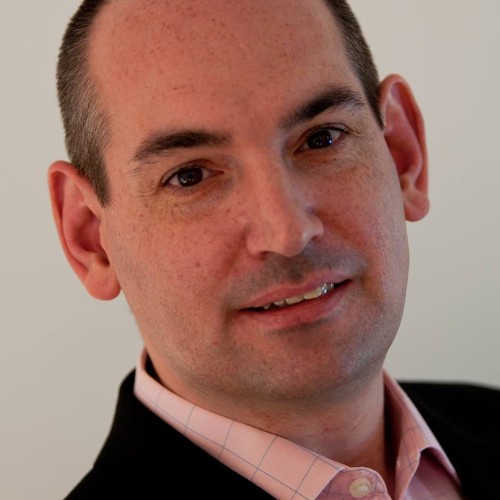
Richard Young, RVP for sales for UK and Ireland for the non-profit sector, and very much aligned to the care industry.

Josh Pines, Sirenum Co-founder focusing on marketing and partnerships. 20+ years experience in software and management consulting.
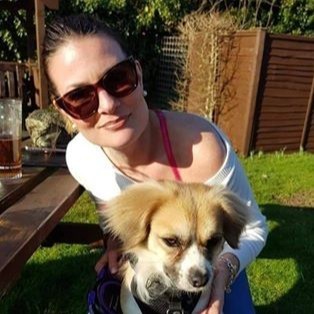
Sarah Williams, a pre-sales software engineer at Sirenum, with nearly 20 years in recruitment staffing and workforce management.
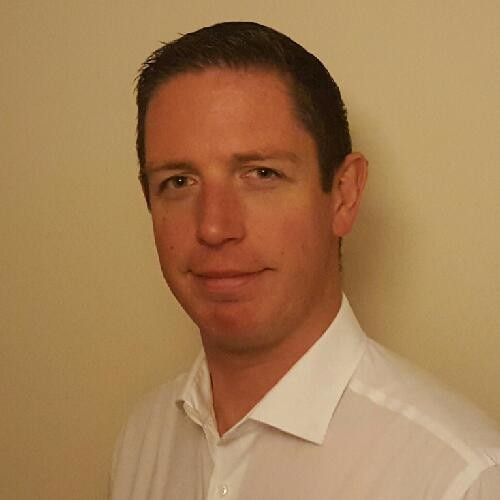
Tony Hall, Head of Technology at The Good Care Group for the last 3 years, but comes from a background of various forms of IT for 22 years.
Where does Sirenum fit into the care industry?
We are the leading Salesforce-based tool for workforce management for shift workers in a number of sectors. Because of this, our goal is that for any shift worker in the world, our technology helps to get the right person in the right place at the right time, and paying that person the right amount.
For the care industry, this means that we help maximise staff utilisation while minimising staff fatigue and increasing engagement with those staff.
What is the challenge we find our care clients facing?
Worker availability is complex, and shift-based work brings with it inherent complexity. In today’s environment with Covid-19, there are even more complexities too.
Mobile carers and shift workers in general are difficult to get and keep engaged. Turnover is high and is a big challenge, as well as absenteeism and lateness which are also impacted by a lack of engagement from this workforce.
Fatigue is another big challenge with carers, again heightened during the current pandemic, which increases the likelihood of infection or even mistakes.
Sirenum has tools that help with these challenges, including:
- Real-time fatigue management – giving your workers enough rest when they need it to make sure they perform as best they can
- Extreme flexibility – the tool can be used across the organisation regardless of the size or type of staff managed
- Unrivalled reporting and IT infrastructure – built on the Salesforce platform
- Empowering staff and management – a mobile app has been built, specifically designed for their needs
- Quick leverage – we can go live in weeks and not months.
What has this meant for our clients?
- Impellam Group uses Sirenum to manage more than 80,000 workers across a number of sectors, and they saw a 36% increase in operational productivity in just the first month of using Sirenum
- Randstad uses Sirenum for its care and education practices, and they quickly saw a 22% decrease in uncovered shifts (they are approaching 100% now)
- Guys and St Thomas’ NHS Foundation Trust was able to go live with Sirenum in 48 hours during the height of the Covid-19 crisis, and saw 100% shift coverage despite the challenges they were facing.
How does Sirenum work for care in practice?
Let’s set the scene. We’re a care coordinator and our role is to schedule support workers and carers to our customers, who are patients that need all different levels of support and care.
Here is what the coordinator will see for each client. This particular client is someone who needs 24/7 care, and each of the coloured tiles represents a new shift, with details of the worker that has been assigned to that shift. It also includes the start and end time for each shift, shift location, and details of what the carer will be required to do during the shift. From a coordinator perspective, this shows that the client’s needs are being met, by the right people.
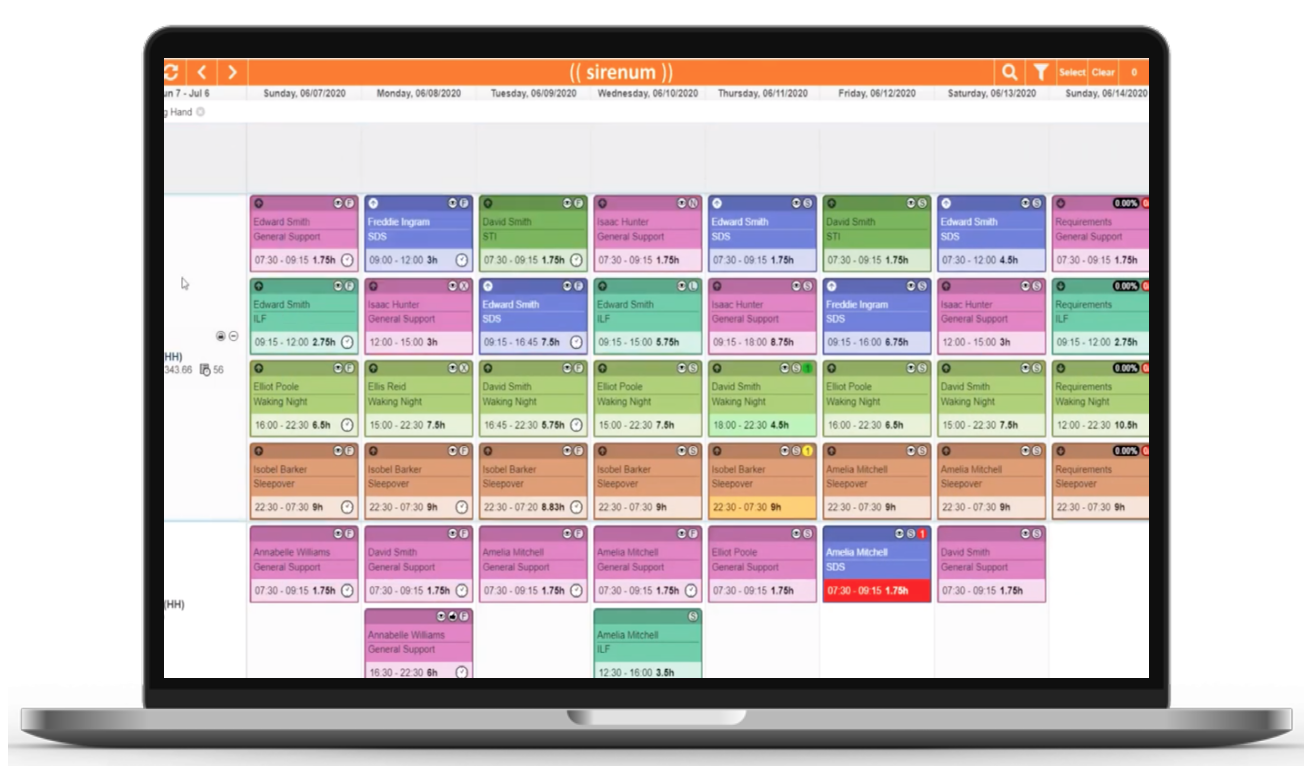
This is a list of all the requirements that still need to be filled. As the care coordinator, we need to distribute these shifts to our workforce, to make sure that all of our customers are sufficiently cared for.
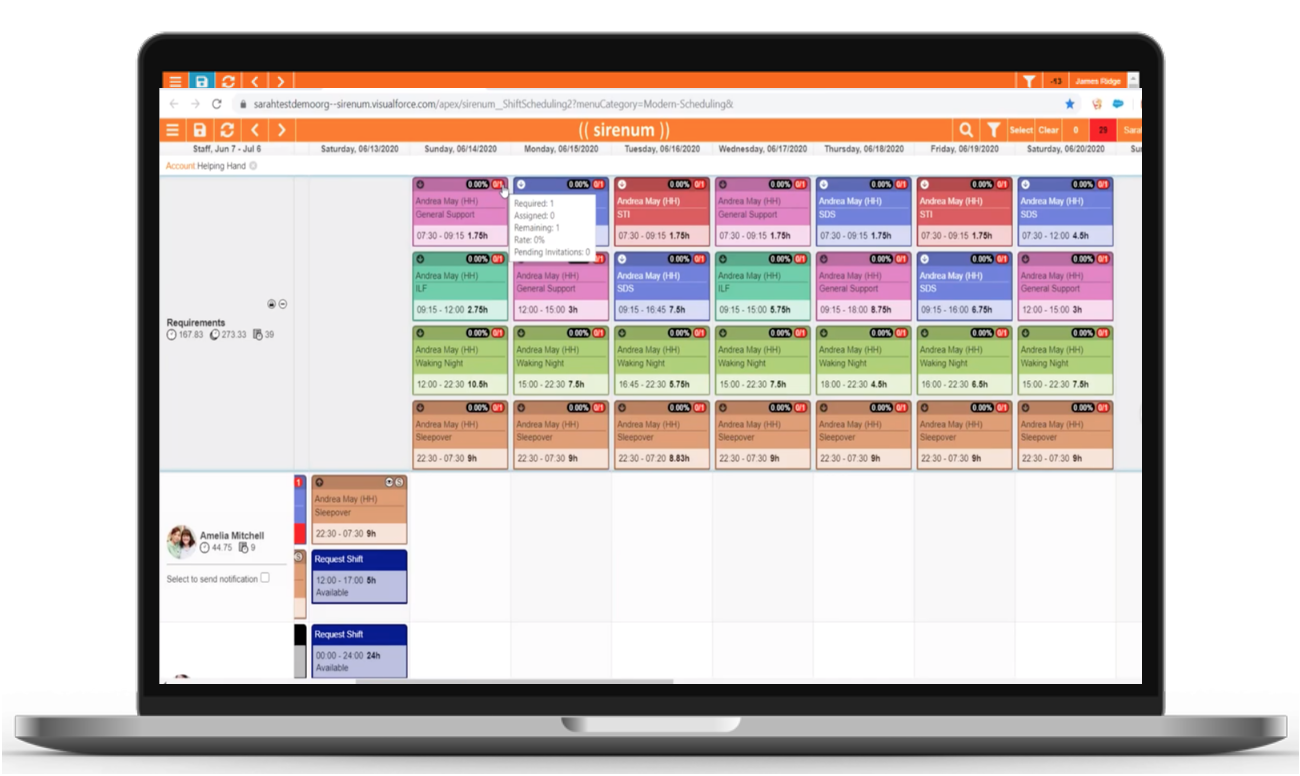
To allocate the right worker to each shift, Sirenum will show which of your workforce is most suitable for the job, using their ratings, experience, training, certifications, availability, and much more. You can then send the shift out to a single carer, or to multiple carers and whoever accepts the shift first will work.
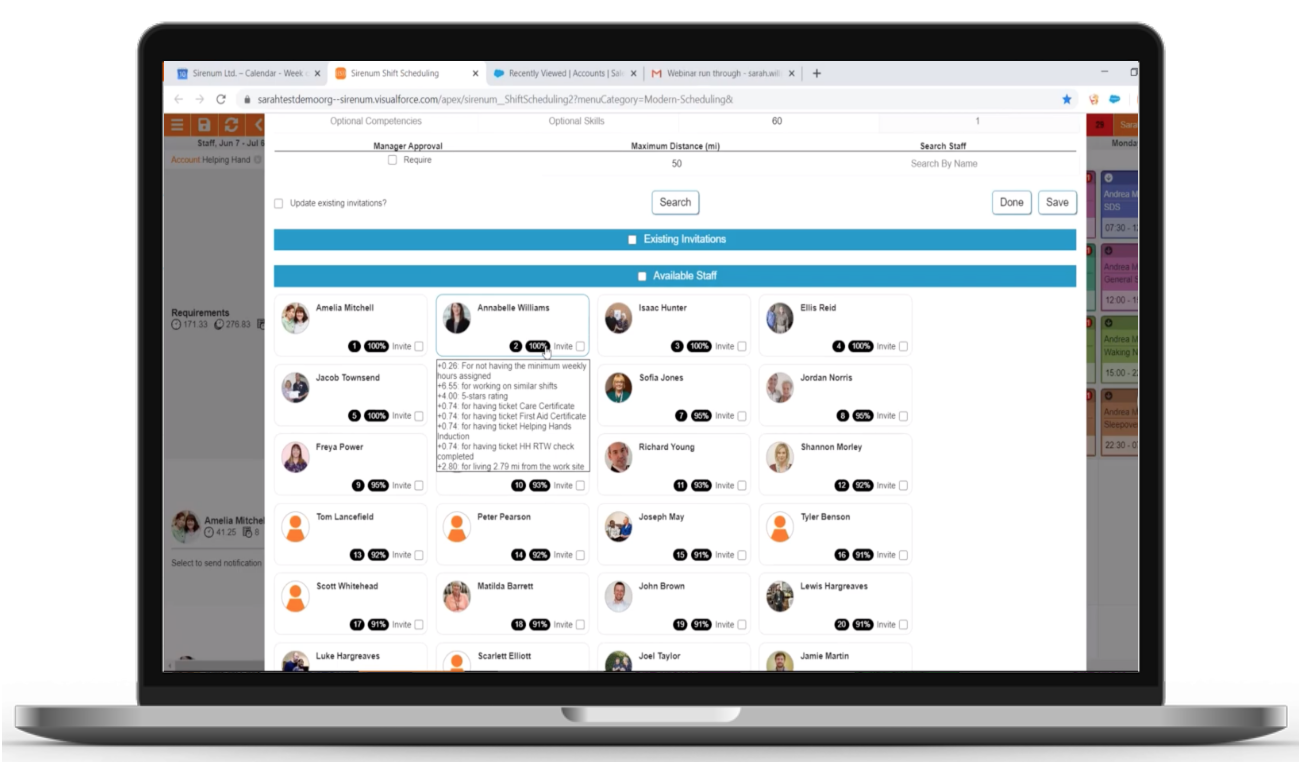
Once we’ve selected 1 or more carers to assign the shift to, we can use Sirenum to send them a push notification to their MySirenum mobile app (shown on screen in a phone emulator). The worker can then choose to accept or reject the shift, but as the coordinator, you will be safe in the knowledge that the shift will only go to suitable workers with the right experience and qualifications.
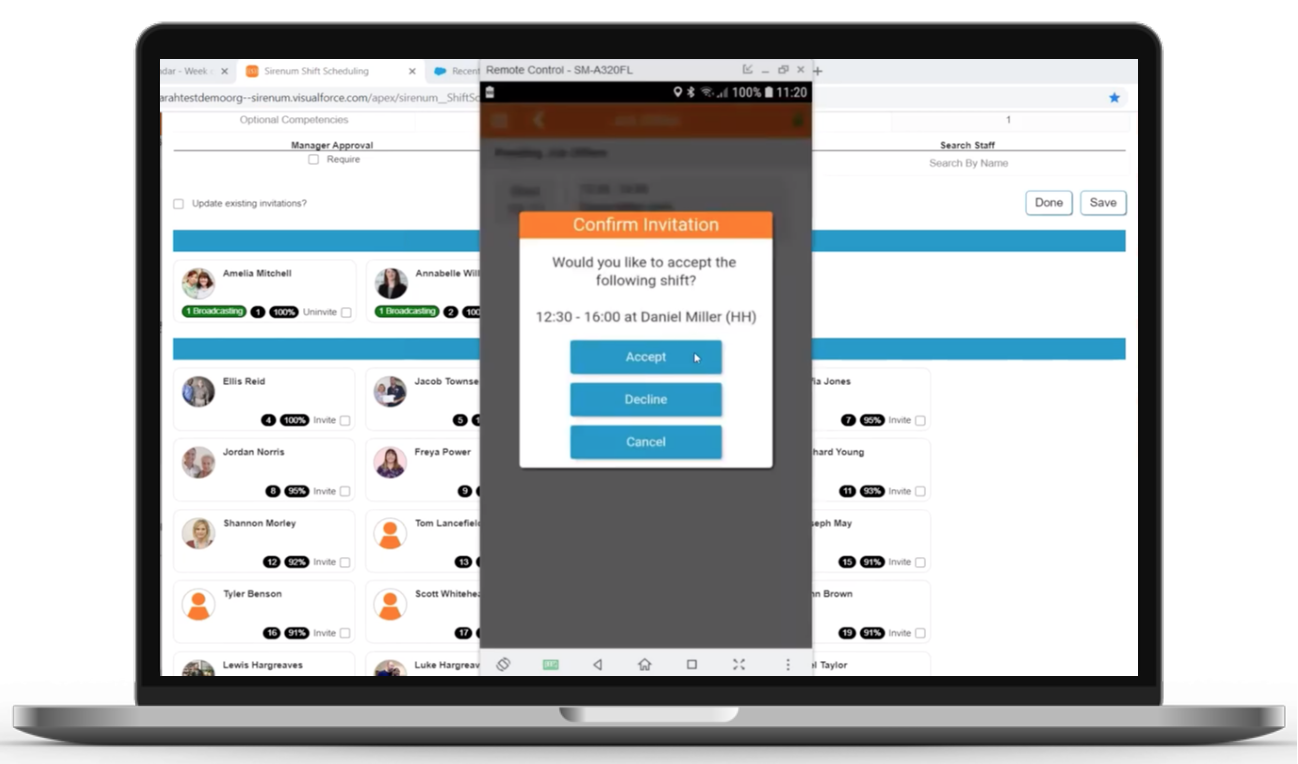
The worker can then feel empowered to accept the shifts they want to work, and also use the app to confirm they are on their way, clock-in, upload photos to show what they’ve been up to, clock out, and see their visit summary form. This increases worker engagement and decreases the number of unfilled shifts.
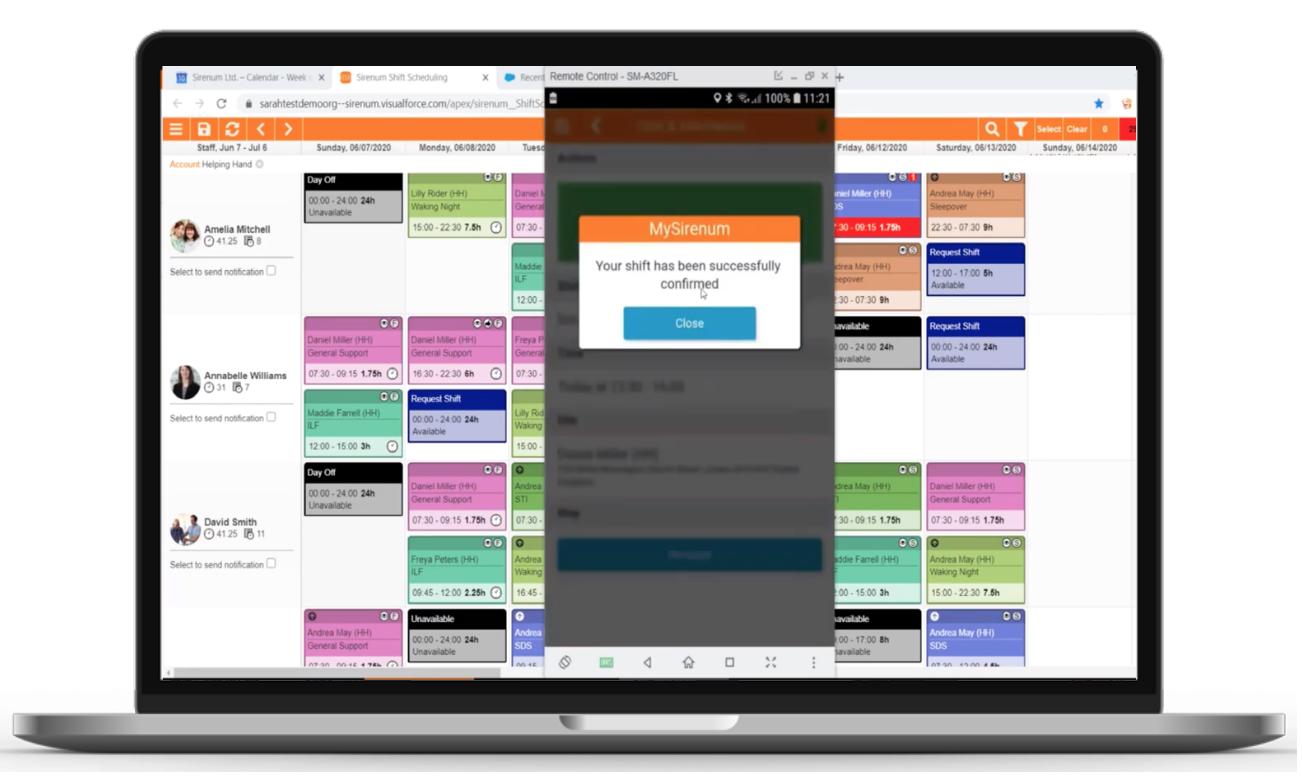
Let’s hear from someone who’s actually implemented and used Sirenum
Welcome Tony Hall, Head of Technology for The Good Care Group. The Good Care Group are a specialised living care company founded over 10 years ago, providing a very high quality of care, and the only dedicated living care company to receive all five outstandings from the CQC. They provide care for 350 clients across England and Scotland with a variety of rate patterns, who are cared for by around 860 carers.
Salesforce was originally implemented 10 years ago but has been utilised much more heavily in the last few years, with 98% of their operational functionality now taking place within Salesforce. They have two different stakeholder journeys: a client and a carer pathway within Salesforce. This enables them to recruit, train, and deploy their carers, and also acquire, assess, and provide a service for their clients, all within the Salesforce platform, using Sirenum to manage this process on both sides.
A couple of the challenges they faced before implementing this technology include:
- They had previously used a 3rd party disconnected rostering system with no links to Salesforce, meaning there was no 2 way communication between the systems
- They also had significant reporting and data cleanliness issues because of this
Sirenum fits in with ‘Good Care Together’, The Good Care Group’s award-winning tech suite for clients and carers, which is a Salesforce lightning community. They use Salesforce complementary technology, all of which have improved the way in which they operate. They have a lot of technology which they are able to adopt because they don’t resist change, and are well ahead of the curve when it comes to other care organisations.
Key lessons learnt:
- Never underestimate poor data!
- Carefully plan any migration
- You can never get enough training
Q&A’s
1. Do I need to buy Salesforce to use Sirenum?
The answer is no. When you buy Sirenum, the core Salesforce platform comes with it. Just like when you buy a car, the tires don’t come separately, it’s already there. In the case of Good Care Group, they needed certain Salesforce CRM components in addition to the platform.
2. What about Covid-19 – how has Sirenum helped during this time?
The primary impact has been crisis management where fatigue is a really big concern. Most evidence of infection among people in the healthcare space was associated with very difficult shift patterns. Understanding fatigue is a big issue, and one that Sirenum can help manage, which has been a key driver for us to get it out there. It also gives so much information which can help stop spreading the disease and keep them safe.
3. How long does it take to get up and running?
At the high level, it usually starts in the 4-6 week range but it varies. Payroll functionality takes a little longer to get live, but one thing about being in the Salesforce community is that you’re able to integrate with other technology quicker.
4. Would someone on a shift be able to show who’s on the next visit? Often our clients want the reassurance of whos visiting them next.
Absolutely! Using MySirenum, carers can check who’s working next and inform the clients. This information can be added to the scheduling tool, so carers can check in seconds.
5. Is it possible to use this software to plan rota for multiple sites, and shifts? And how does it make sure workers don’t go over their contracted hours?
Yes, the vast majority of our clients are dealing with the challenge of multiple sites/shifts, but Sirenum makes it simple. You can use Sirenum to set up your health and safety rules, so if workers have a maximum of 40 hours per week they can work, set this as a rule so that shifts cannot be assigned to people who have worked over 40 hours. This is totally customisable to work with however the company operates.
Watch the full webinar recording here, or head over to our Sirenum for Care page to find out more.

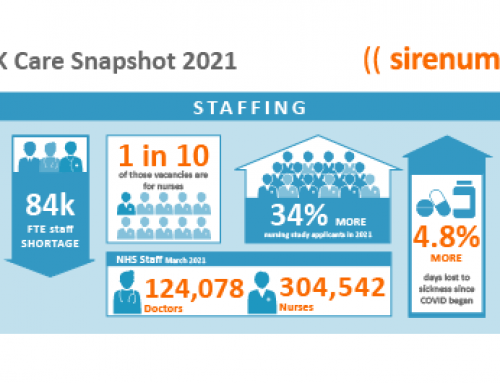
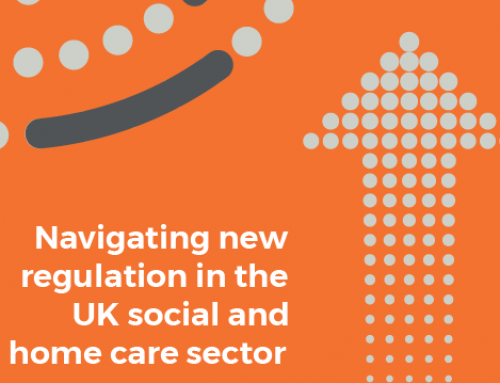

Leave A Comment